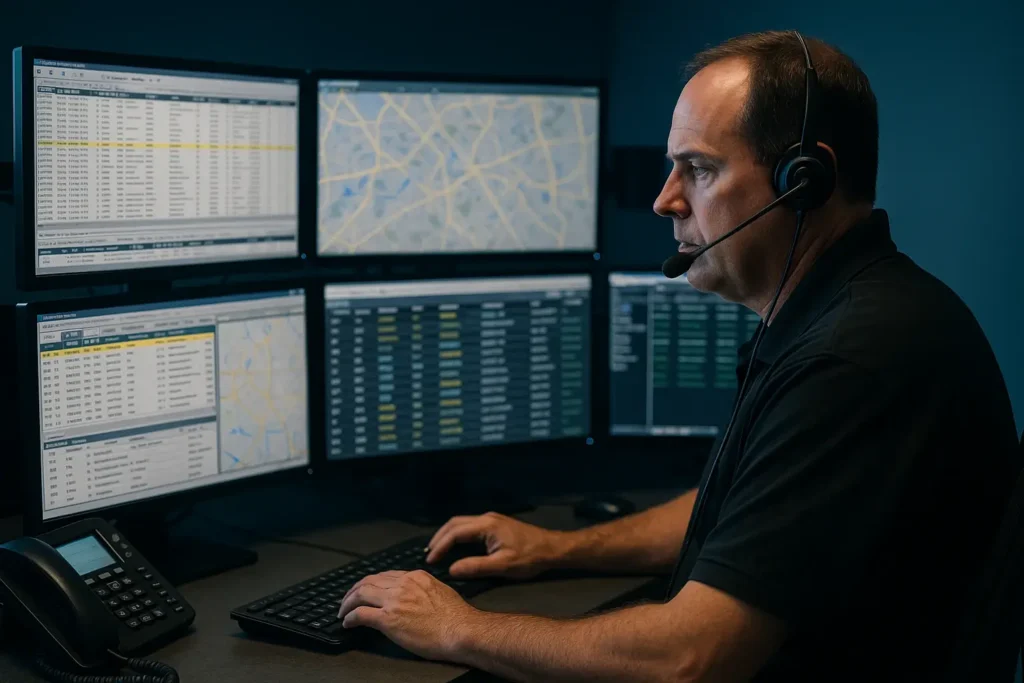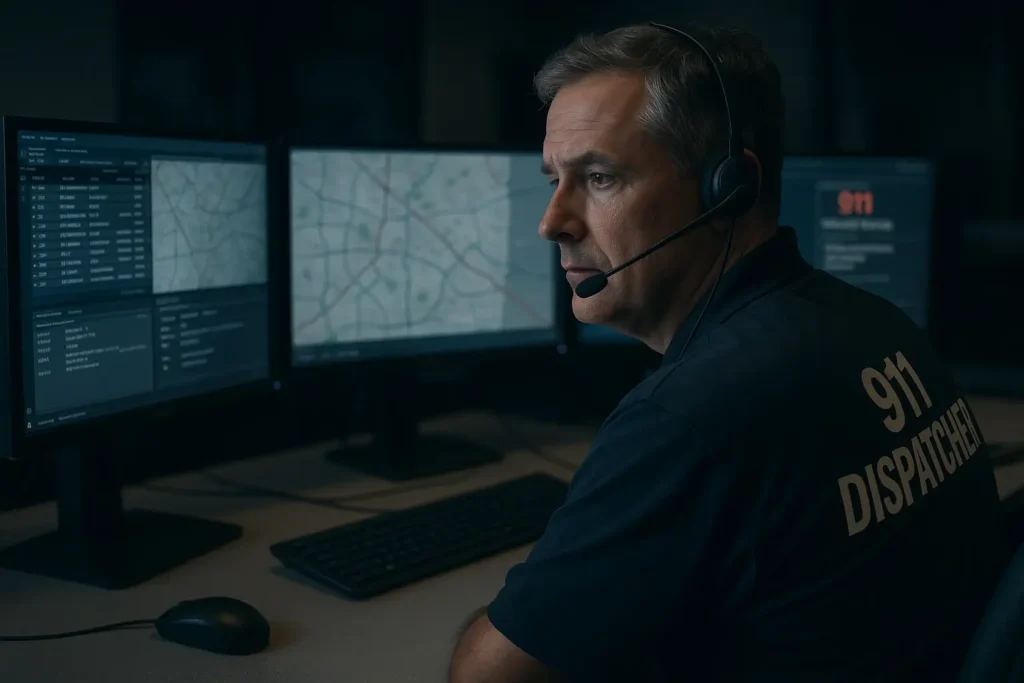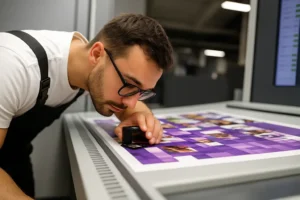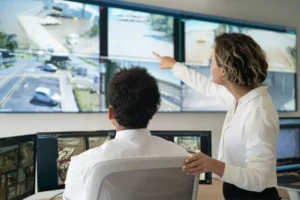Let’s talk about something most people don’t think about—until they really need it: the 911 dispatch center.
I’ve spent years designing and building control room consoles for these centers, as a leading control room consoles Manufacturer and I can tell you firsthand—what happens behind those calls is just as critical as what happens out in the field. Dispatchers are the first line of help, and the space they work in can make a real difference.
1. It All Starts With a Call
When someone dials 911, the first response doesn’t come from a police officer, firefighter, or paramedic. It comes from a dispatcher. They’re the ones picking up the phone when things go sideways—when someone’s in danger, confused, or in pain.
Their job? Quickly figure out what’s happening, where it’s happening, and who needs to respond. At the same time, they’re working with computer-aided dispatch systems (we call it CAD), digital maps, radio communications, maybe even video feeds—all at once.
It’s a lot to manage, and it happens fast. According to the National Emergency Number Association (NENA), there are more than 240 million 911 calls every year in the U.S. That’s millions of split-second decisions.
2. Inside the Room Most People Never See
From the outside, a dispatch center might look like any other office—with desks, chairs, and a lot of screens. But walk inside, and you’ll realize this isn’t just a workspace. It’s a mission-critical environment built for high focus and constant activity.
The consoles we design need to support nonstop operations—sometimes 24/7. That means managing things like lighting, noise, and monitor placement so dispatchers can stay sharp through long shifts.
When a call comes in, the dispatcher does a kind of mental triage. Is it a true emergency? What kind? Then they start gathering info, updating CAD, alerting field units, and often giving instructions—all at the same time.
Think of it like air traffic control, except the emergencies are on the ground.

3. What It Takes to Be a Dispatcher
This job isn’t for everyone. Dispatchers work under pressure, juggling multiple inputs at once: a caller on the line, updates from officers in the field, live mapping, and CAD entries.
They’ve got to stay calm, focused, and clear, even when someone on the other end of the phone is panicking. And accuracy is everything. A missed address or misunderstood detail can delay the response—or worse.
That’s why we spend so much time on the design of each console. The layout, monitor positioning, desk adjustability, and even temperature control—it’s all about supporting concentration and minimizing distractions.

4. The Tech That Keeps It All Running
Modern dispatch centers run on layers of integrated technology. The CAD system is at the center—it connects the dots between caller info, dispatch data, responder tracking, and more.
Add GIS (geographic information systems) for mapping, digital radios for field communication, and recording tools for call review and accountability. Then there’s VoIP for managing calls over internet networks and Next Generation 911 (NG911), which includes support for text messages, images, and even live video.
NG911 is expanding across the U.S. now, giving dispatchers more data to work with (source: Federal Communications Commission). But more data means more complexity. If the workspace doesn’t support that, the technology can become a distraction instead of a help.
That’s where things like cable management, cooling systems, and screen adjustability—those behind-the-scenes design details—make a big impact.
5. Coordinating Across Agencies
Emergencies don’t always respect boundaries. Dispatchers often need to coordinate across multiple departments—police, fire, EMS, utilities, even transportation.
The systems have to work together. When one dispatcher enters info into CAD, it needs to show up instantly for everyone involved. That’s called interoperability.
For us, it means thinking ahead when designing shared spaces—making sure different teams can operate side by side without stepping on each other’s toes, both physically and digitally.
6. The Human Side of the Job
This is a tough field. Long hours, difficult calls, and not nearly enough staff. A 2022 APCO International report showed that more than half of U.S. dispatch centers are short-staffed.
We hear this a lot when we’re working on-site: dispatchers stretched thin, managing back-to-back emergencies with barely a break. And tech upgrades can be a double-edged sword—if the systems change too quickly or training doesn’t keep up, it just adds more stress.
That’s why we aim for flexibility. Consoles should support the tools of today while leaving room for whatever’s coming next.
And let’s not forget the emotional toll. Dispatchers hear the worst parts of people’s lives, but rarely see how things turn out. That kind of disconnect can wear you down. Some centers are adding quiet rooms, wellness areas, or peer support programs—and we’re adapting our designs to include space for those too.

7. Looking Ahead: The Future of Dispatch
We’re already seeing artificial intelligence help with call sorting and incident prioritization. Live video feeds and GPS tracking are becoming more common. And some centers are starting to use predictive analytics to anticipate problems before they happen.
But with every new tool comes a new layer of complexity. Our job on the design side is to help manage that complexity—to create workspaces that keep things clear and usable, not cluttered or overwhelming.
8. Why This Work Matters
Every piece of a 911 dispatch center—every screen, console, software tool, and physical layout—exists for one purpose: to get help to someone who needs it, fast.
Dispatchers are the first, first responders. They’re the ones connecting people in crisis with the support that can save lives.
And we take that seriously. Because when their environment works well, they work better. That’s what drives our work, and it’s why console design isn’t just about furniture—it’s about function, focus, and people.


